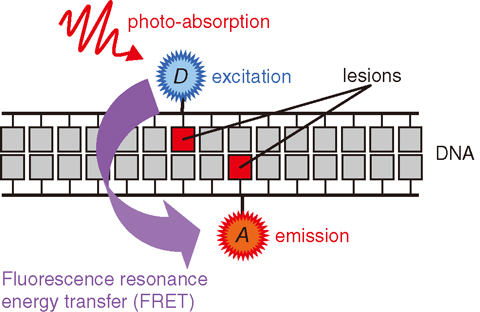
Fig.5-24 Principle of clustered DNA damage detection using FRET

Fig.5-25 Results of the FRET experiments for irradiated DNA
Ionizing radiation exists widely in the environment as well as in space and injures our genomic DNA. Fortunately, cells have evolved mechanisms to protect genomic information by repairing this DNA. However, if a living organism is heavily irradiated all at once, the injured DNA cannot be repaired. On the other hand, the biological effects of radiation are useful to cancer therapy as they can cause irreparable DNA damage to cancer cells. Thus, we must ask: what is the irreparable DNA damage?
So far, more than a hundred DNA lesions produced by radiation have been characterized and each one is known to be repairable, which implies that an isolated lesion on DNA is unlikely to constitute irreparable damage. We considered the distance between lesions to be a key factor for the reparability. It is well-known that repair of artificially clustered DNA damage (defined as a DNA model with two close lesions) is prone to fail in a cell. To begin with, there has not been decisive evidence for the existence of clustered damage or enough knowledge about the chemical structures involved. Thus, we have developed new methodology for investigating the substance of clustered DNA damage. We here focused on a photophysical phenomenon, “fluorescence resonance energy transfer (FRET)”. If there are “aggregated” lesions labeled with fluorophores (D - A), the probability of the excited D energy transfer to A (FRET efficiency) increases (Fig.5-24). Fig.5-25 shows the results of FRET experiments of DNA irradiated with 60Co γ-rays and carbon ion beams. The higher FRET efficiency for the γ-rays (![]() ) than that for the carbon ion beam (
) than that for the carbon ion beam (![]() ) indicates that clustered DNA damage was more likely to be produced by the carbon ion beam than by γ-rays. Moreover, it seems that the data points for FRET efficiency near zero dose were around 0.10 in the carbon ion beam, which suggests that such a beam can produce clustered DNA damage sites in a track. This will be a basis for effective heavy ion beam cancer therapy. New findings of clustered DNA damage obtained in the future using the FRET technique will be useful for radiation protection in space as well as for medical applications.
) indicates that clustered DNA damage was more likely to be produced by the carbon ion beam than by γ-rays. Moreover, it seems that the data points for FRET efficiency near zero dose were around 0.10 in the carbon ion beam, which suggests that such a beam can produce clustered DNA damage sites in a track. This will be a basis for effective heavy ion beam cancer therapy. New findings of clustered DNA damage obtained in the future using the FRET technique will be useful for radiation protection in space as well as for medical applications.